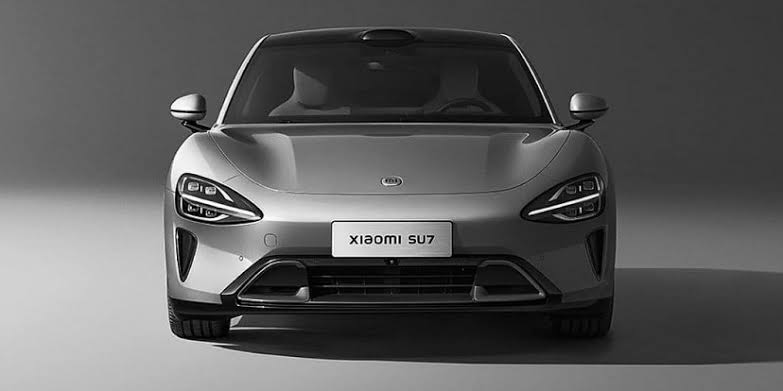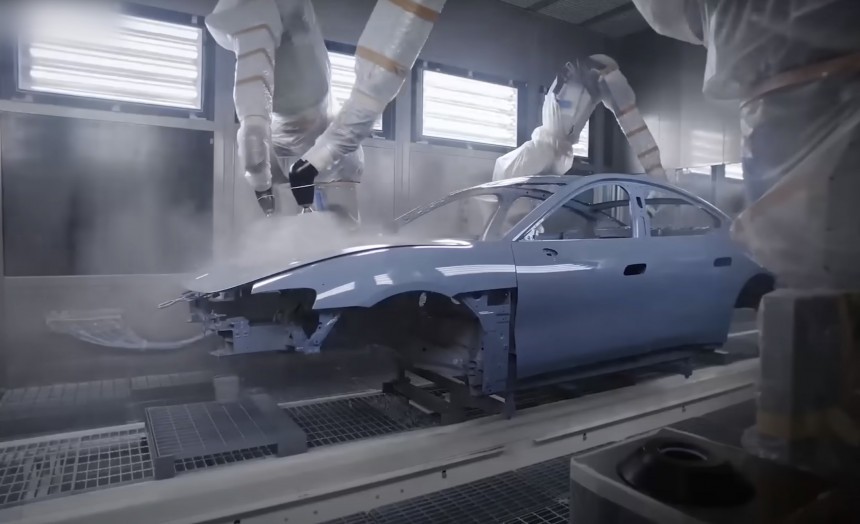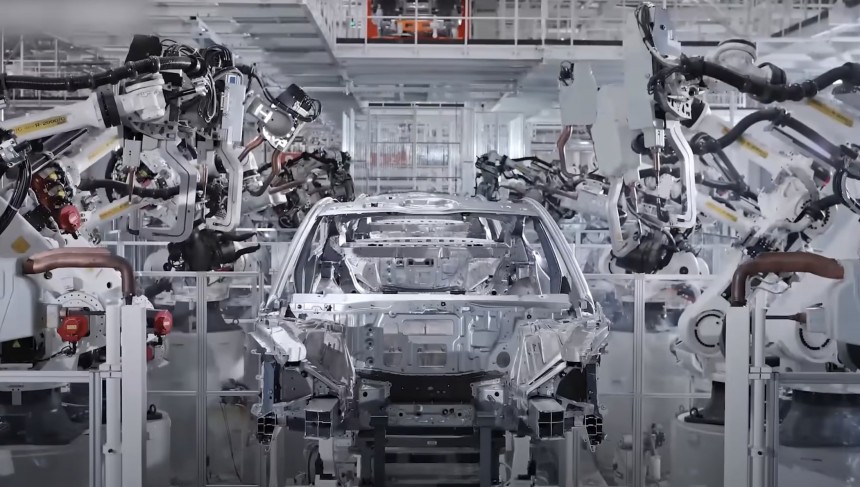The high pace is due to the highly automated production line and advanced smart techniques involved. More than 700 robots reportedly operate in the factory. They carry out tasks such as installation, inspection, and transportation.
Twenty employees benefit from the assistance of 381 robots in the body shop, with eight robots per workstation, four on each side of the car. Robotic arms handle the doors, set them in place, tighten bolts, and adjust hinges.
Robotic arms also fit the front and rear windshield, but also the panoramic sunroof. From the moment the parts are picked up until they are assembled to the car body, it takes less than 30 seconds. That is twice as fast as that of traditional car companies, Xiaomi claims.
The smartphone/car manufacturer claims that this strategy is three times more efficient than using human operators only.
Xiaomi has implemented a smart system in the paint shop. Due to the flexible color sorting technique, the system is capable of quickly filling, cleaning, and supplying paint of each color, switching from one to another, in just 40 minutes. This can reduce order delivery time by 25 percent.
The first Xiaomi car, the SU7, plagued by bad luck
Xiaomi officially announced its intention to join the automotive industry on March 30, 2021. They already had a car in development by the time they made the announcement.
The Xiaomi SU7 was unveiled on March 28, 2024. The company is targeting a sales figure of 100,000 units sold per year in its first year on the market and up to 900,000 units over the following three years.
However, with orders for the SU7 pouring in, the automaker has issues to deal with. Several videos of test cars crashing have invaded social media. The scenario seems to be the same every time: The driver presses the acceleration pedal a bit too hard, the car loses traction and crashes into a curb, a pole, or another vehicle. Xiaomi must fix the issue before cars reach customers.
Car News China reported that 59 examples arrived in showrooms from 28 cities across the country. Potential customers waited until 3 AM to drive the car. Xiaomi started handing over the SU7 to influencers for reviews in order to raise the model’s popularity.
However, they don’t seem to need it. The company received 50,000 reservation requests in less than half an hour. 24 hours later, they had received 90,000 reservations.
The procedure was simple: all that customers had to do to reserve an SU7 was pay a deposit of 5,000 yuan ($691). But the large number of requests also extended waiting times, which prompted several customers, who were not willing to wait, to ask for their money back.
According to Reuters, those who reserved the SU7 Pro version will have to wait between 18 and 21 weeks. Waiting times are approximately 30 weeks for those who chose the range-topping SU7 Max. Xiaomi will start deliveries this April.


















